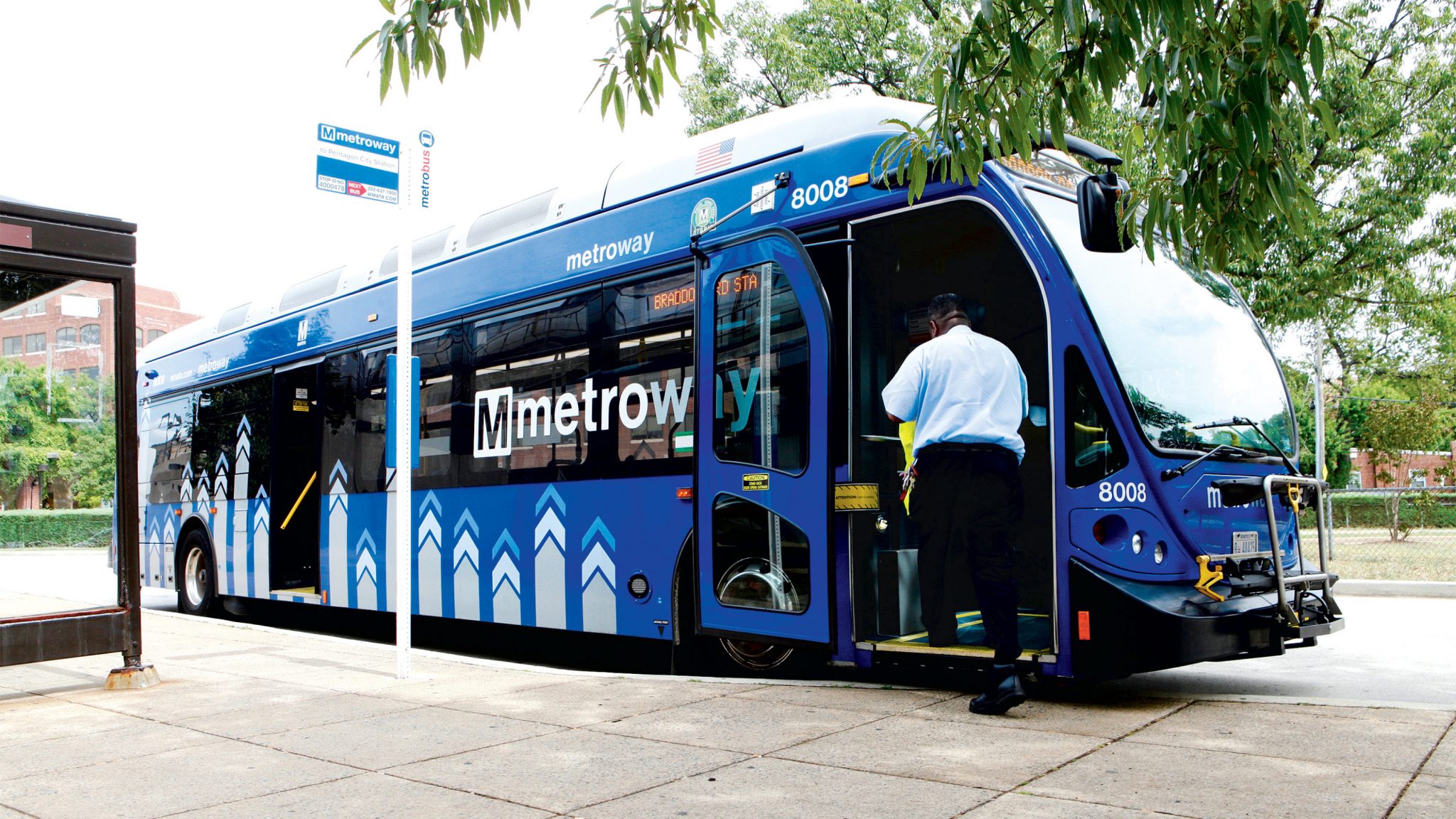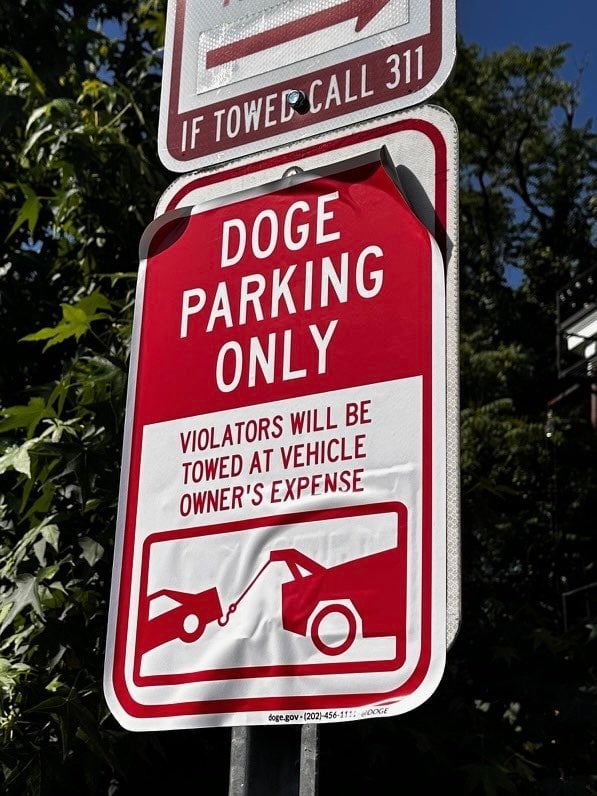It’s been a rough couple of years for transit in Washington. Arlington’s Columbia Pike streetcar is dead. Northeast DC’s H Street streetcar opened years late and millions over its projected cost. Maryland’s Purple Line was halted by a judge five days before it was to receive federal money allowing it to break ground. And don’t get me started on Metro.
You could be forgiven, amid this news, for not knowing that since 2014 the area has also been the site of an innovative transit endeavor that is even now speeding commuters past traffic jams—and may soon become part of the region’s infrastructure. This sleek, 21st-century miracle runs on rubber tires and concrete roads. The wheels on it go round and round. Yes, we’re talking about the bus.
But not just any bus. It’s bus rapid transit, a vehicle that scoots along dedicated lanes, picking up riders every half mile or so at airy, comfortable stations where they can see real-time travel information and pay before boarding. Designed to be as fast and reliable as a train—but far less expensive—BRT originated in Brazil and has proved successful in US locales such as Cleveland and Los Angeles.
Over the past two years, it’s been successful in Washington, too. The area’s first BRT, Metroway, runs between Pentagon City and Alexandria’s Braddock Road Metro station. BRT buses, in their own lanes, avoid Jefferson Davis Highway’s traffic, gliding past the new rowhouses and office towers around Potomac Yard. The line carries nearly 2,000 people each day, 47 percent more than this time last year. The five-mile trip takes about 24 minutes and slices almost a quarter off the time it would take sitting on the local Metrobus in regular lanes.
For transportation planners, though, the real innovation is a different kind of speed: Metroway happened in less than two decades from inception to opening day, remarkably fast for a major transportation project—at an infrastructure cost of only $43 million. By comparison, Metro’s Silver Line will cost upward of $5 billion, and though it appeared on planners’ maps in the ’60s, the first trains didn’t run until 2014 and the line won’t be completed till at least 2019.
Metro’s costs, in fact, are in keeping with a long-term trend: Building major public infrastructure, notably rail lines, has become dramatically more expensive and cumbersome. Wages on government projects tend to be high. Rising real-estate prices make it increasingly costly to acquire land to build rail lines, even underground. Environmental rules require lengthy studies, and wealthy communities often hijack them to delay projects they don’t like. Sprawl means transit lines have to stretch farther out to serve fewer people, making them less cost-effective than in close-in neighborhoods.
BRT faces far fewer hurdles. The roads, for one thing, are already there. And although widening them for dedicated bus lanes can be expensive—and mollifying the businesses and commuters who worry about eliminating car lanes can be complicated—it’s nothing like selling the public on a big dig that could disrupt a neighborhood for years and years.
No wonder nearly every local jurisdiction has a BRT proposal cooking: Leesburg Pike and Richmond Highway in Virginia, Rockville Pike and Route 355 in Maryland, 16th Street in DC. Even outer counties, such as Prince William and Howard, have visions. Montgomery County has the region’s grandest plan, for ten lines and 87 miles of service. County executive Ike Leggett wants to see the first corridor, on Route 29 between Silver Spring and Burtonsville, running by 2020.
Unlike Metroway, however, many of these projects won’t have all the standard BRT features. A trial project on Georgia Avenue in the District, for instance, consists of lanes off-limits to cars but open to taxis and bikes. Others would run buses on highway shoulders.
The low-impact build-out is appealing, but the ability to do BRT on a piecemeal basis is also a danger. A train comes as a fully optioned package: You can’t have a train without railcars, rails, or stations. BRT is more of a kit of parts, and you can find cities that included some features and not others. In the face of budget shortfalls or public pressure, it’s easy to cut, say, the stations that speed things up by letting people pay before they board. Or the elevated platforms that allow them to board without stepping up, just like on the subway. Or, especially, the dedicated lanes that let BRT avoid traffic. Cut too much and BRT becomes just another bus.
There are also some ways BRT can never match a subway—even one as balky as 21st-century Metro. Unless you’re willing to accept South American–level crush loads, buses can’t carry as many people. They don’t have the life spans of railcars. And though Metro has helped turn entire neighborhoods into economic dynamos, it’s not clear whether even the sleekest bus lines can attract the same private development: Would-be investors know rails are permanent, but bus infrastructure can be eliminated even more easily than it gets built. All reasons why Maryland continues to pursue light rail for the Purple Line over a cheaper bus alternative.
Nonetheless, it’s refreshing to see local leaders embrace the once-humble bus. Not that they have much choice: Last year, Metro admitted that “expanding Metrorail cannot be a short-term transportation solution.” BRT could give you and your neighbors a faster, more reliable way to get around within your lifetime, if not in time for dinner.

















